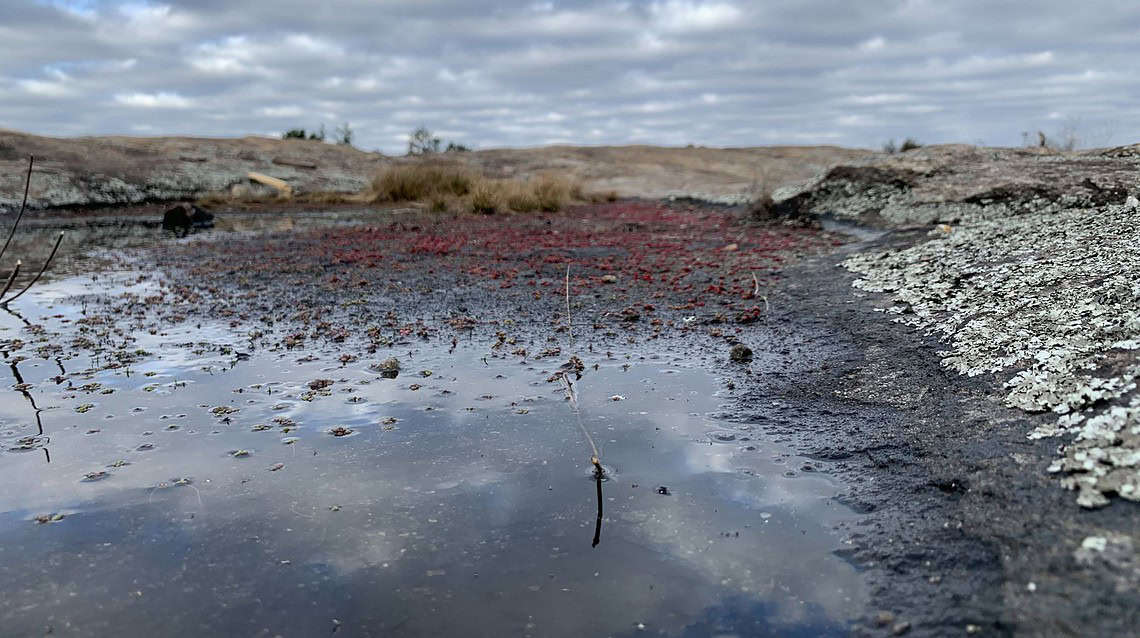What’s a Solution Pit – and What Lives There?

Above, you can see a solution pit, a depression in the surface of the rock outcrops. You’ll find them anywhere there are rock outcrops in the National Heritage Area, especially in Davidson-Arabia Mountain Nature Preserve and Panola Mountain State Park. Solution pits take thousands of years to form in the rock face, a process that begins with two things: lichen and water. Water, as it falls on the outcrops, slowly erodes the granite. Meanwhile, lichen grows on the bare rock surface and releases a weak acid that reacts with the stone to, over time, further erode and indent the rock. These processes take place in geologic time, meaning that everything is very slow: thousands of years pass before a solution pit looks like the ones you see today.
Plant Life
Since solution pits are the only real source of water and soil on the rock outcrop itself, a variety of rare and endangered plants rely on these pits to survive. That includes the iconic plant of the rock
outcrop, diamorpha. Also called “elf orpine”, this sturdy little plant has had to adapt to the harsh conditions of the granite outcrop. On the bare surface of Arabia and Panola Mountains, diamorpha has no protection from the sun. In the summer, the plant would be scorched. As a result, diamorpha has evolved a reverse growing season, meaning that it grows from December through May, blooms in the spring, and then goes dormant until the next winter. In the summer, diamorpha looks like a few twigs sticking out of the soil.
outcrop, diamorpha. Also called “elf orpine”, this sturdy little plant has had to adapt to the harsh conditions of the granite outcrop. On the bare surface of Arabia and Panola Mountains, diamorpha has no protection from the sun. In the summer, the plant would be scorched. As a result, diamorpha has evolved a reverse growing season, meaning that it grows from December through May, blooms in the spring, and then goes dormant until the next winter. In the summer, diamorpha looks like a few twigs sticking out of the soil.
In the winter, when diamorpha is active, it still lives in an environment with no shade and no protection from the sun. That’s where the beautiful red of the diamorpha’s succulent leaves becomes important. The leaves are infused with anthocyanins, a chemical pigment that turns the leaves red and protects the plant from a surplus of UV light, also leading to the diamorpha’s striking color. From December through late spring, you can see diamorpha in the solution pits along the trails.
Protect the Solution Pits
As you hike, take care of the solution pits and stick to the bare granite. Remember, water on the outcrops is ephemeral, and solution pits sometimes are just filled with dry, sandy soil. By sticking to bare stone, we can leave solution pits in place to continue their slow geologic growth, and protect the plants that live there.


